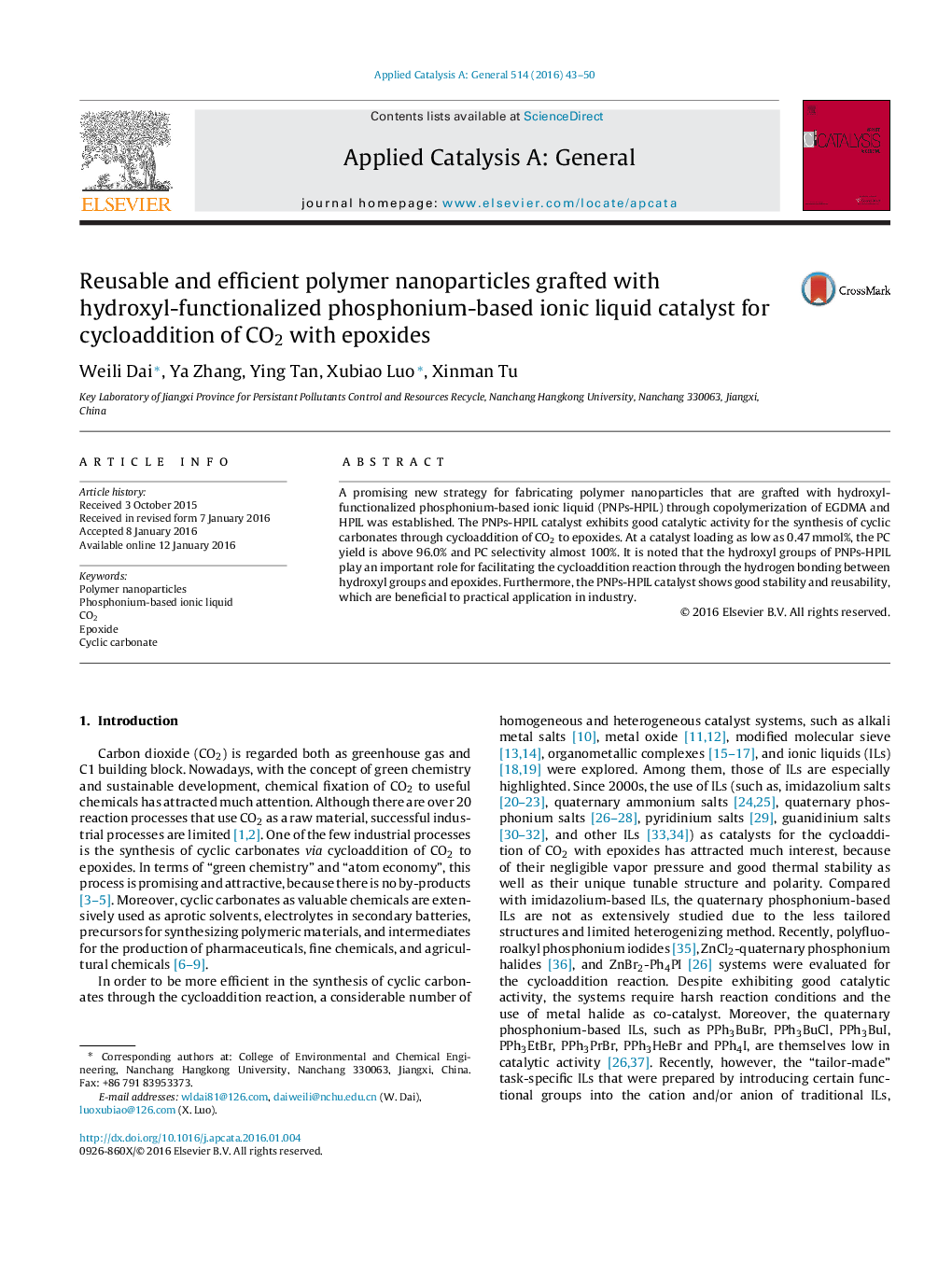| Article ID | Journal | Published Year | Pages | File Type |
|---|---|---|---|---|
| 38940 | Applied Catalysis A: General | 2016 | 8 Pages |
•Polymer grafted OH functionalized phosphonium ionic liquid was first fabricated.•The OH group plays an important role for facilitating the cycloaddition reaction.•The catalyst shows good catalytic activity, stability and recyclability.
A promising new strategy for fabricating polymer nanoparticles that are grafted with hydroxyl-functionalized phosphonium-based ionic liquid (PNPs-HPIL) through copolymerization of EGDMA and HPIL was established. The PNPs-HPIL catalyst exhibits good catalytic activity for the synthesis of cyclic carbonates through cycloaddition of CO2 to epoxides. At a catalyst loading as low as 0.47 mmol%, the PC yield is above 96.0% and PC selectivity almost 100%. It is noted that the hydroxyl groups of PNPs-HPIL play an important role for facilitating the cycloaddition reaction through the hydrogen bonding between hydroxyl groups and epoxides. Furthermore, the PNPs-HPIL catalyst shows good stability and reusability, which are beneficial to practical application in industry.
Graphical abstractA novel reusable polymer nanoparticles grafted hydroxyl-functionalized phosphonium-based ionic liquid (PNPs-HPIL) was first prepared, and evaluated as efficient for the synthesis of cyclic carbonates from CO2 and epoxides. The as-fabricated PNPs-HPIL catalysts exhibit good catalytic acitivity, stability, and reusability, which are benefical to practical application in industry.Figure optionsDownload full-size imageDownload high-quality image (110 K)Download as PowerPoint slide
